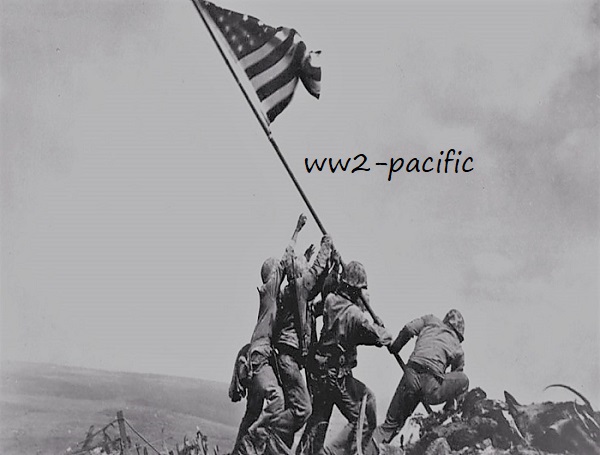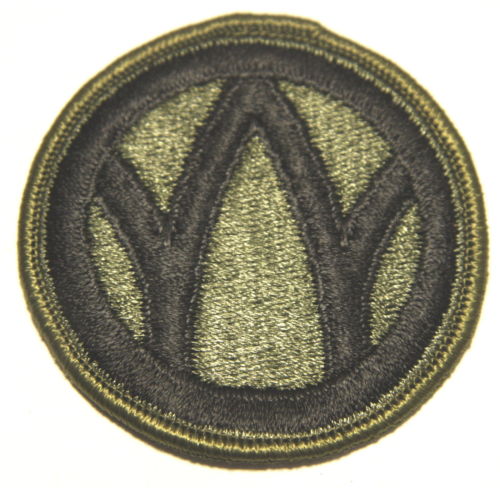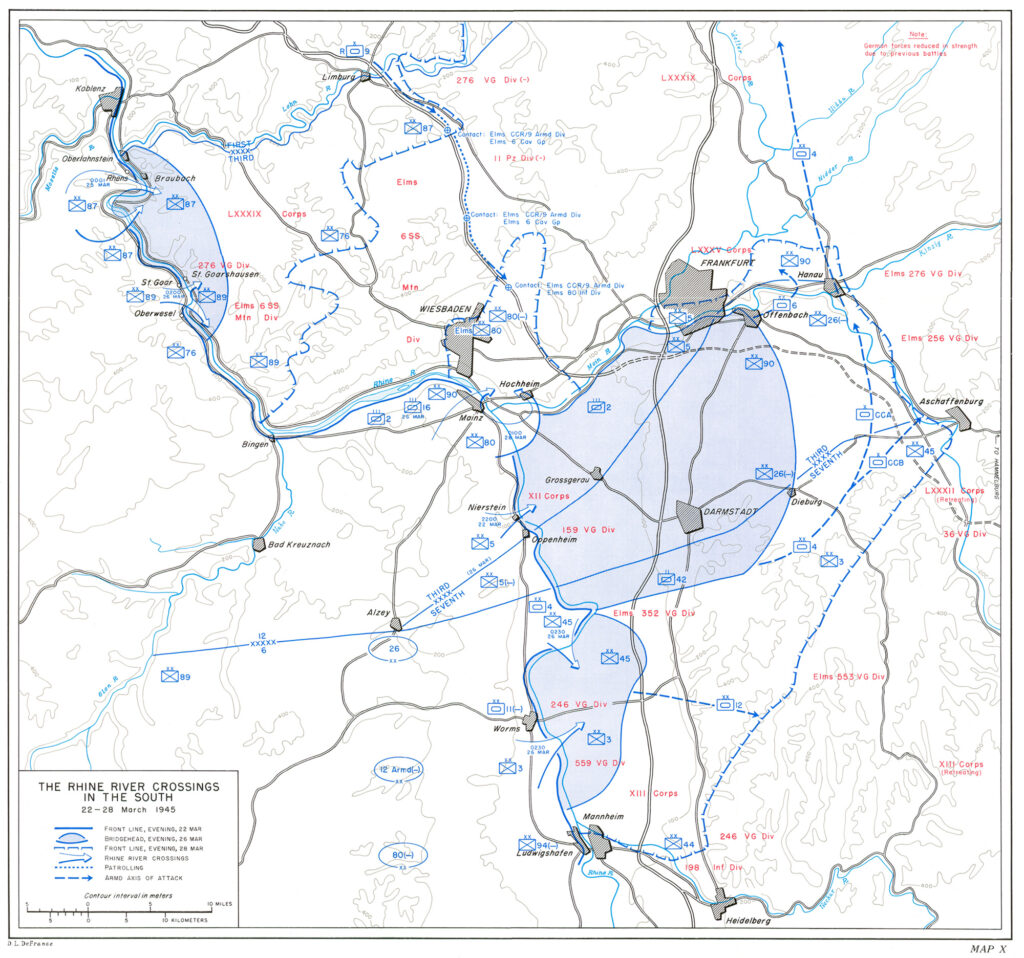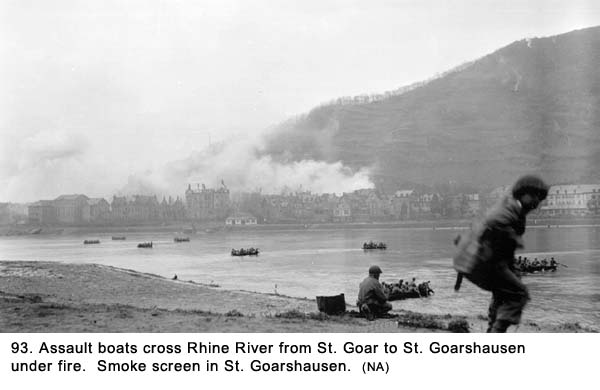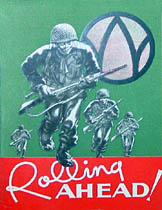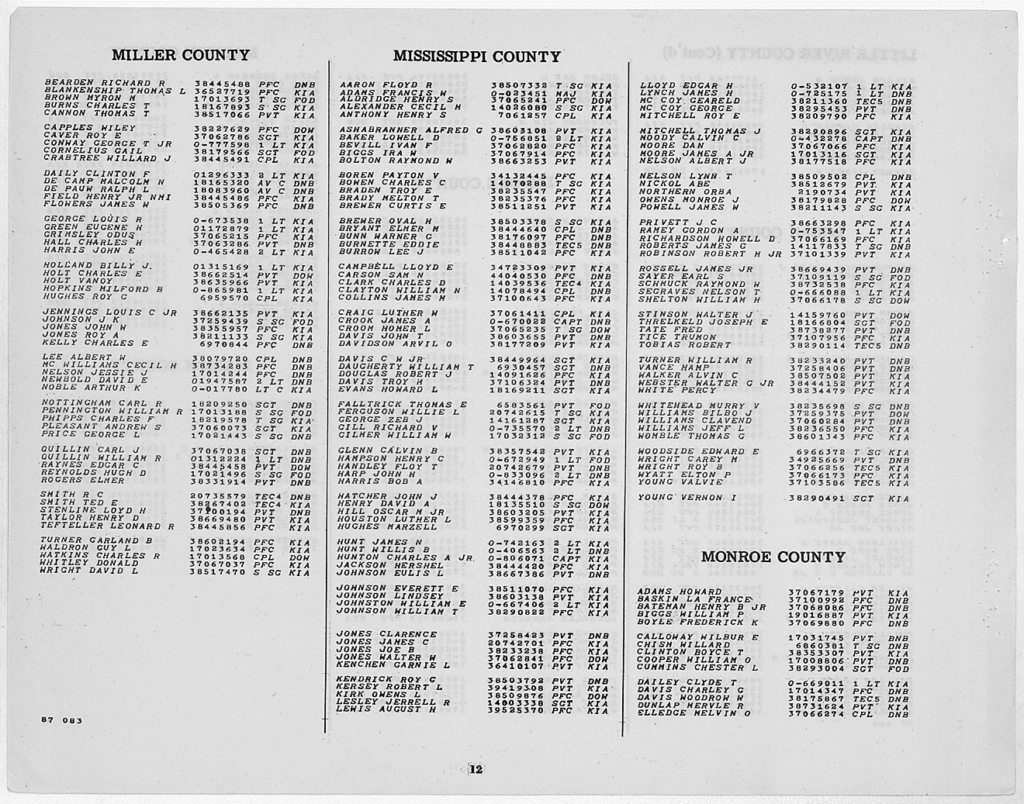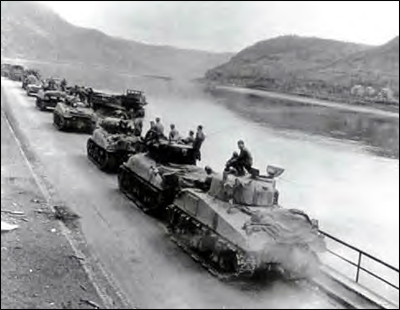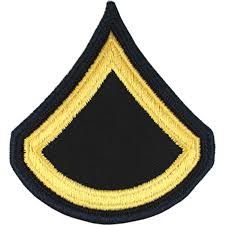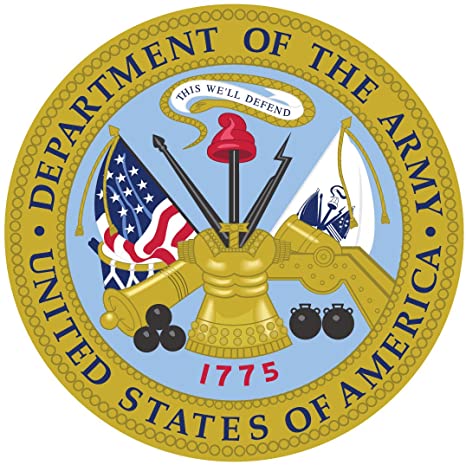Private First Class Thomas Lloyd Blankenship.
354th Infantry Regiment, 89th Infantry Division ‘Rolling W”.
There’s no information in the records of individual soldiers. Those are kept at the Army Personnel Center in St Louis, MO. Unfortunately, many of the WWII records burnt down in a fire.
Thomas was born on Dec. 11, 1921 in Miller County, Arkansas.
Father, Benjamin Walter Blankinship.
Mother, Maud (Morrow) Blankinship.
Brother(s), Byron Blankinship.
He Enlisted the Army in Arkansas with serial number 36527719.
Thomas L. Blankenship was a Soldier in the 354th Infantry Regiment.
Thomas was Killed in Action in St. Goarhausen, Germany on March 26, 1945, and he is honored with the Purple Heart, Good Conduct Medal, American Campaign Medal, Army Presidential Unit Citation, European-African-Middle Eastern Campaign Medal, WW II Victory Medal.
And he is buried at Hillcrest Cemetery, Texarkana, Bowie County, Texas.
Thanks to the 89th http://www.89infdivww2.org/ and Lone Sentry http://www.lonesentry.com/
https://www.familysearch.org/tree/person/details/GJM2-SWR
Jean Louis Vijgen, ww2-Pacific.com ww2-europe.com
Air Force Info, Rolland Swank.
ABMC Website, https://abmc.gov
Marines Info, https://missingmarines.com/ Geoffrey Roecker
Seabees History Bob Smith https://seabeehf.org/
Navy Info, http://navylog.navymemorial.org
POW Info, http://www.mansell.com Dwight Rider and Wes injerd.
Philippine Info, http://www.philippine-scouts.org/ Robert Capistrano
Navy Seal Memorial, http://www.navysealmemorials.com
Family Info, https://www.familysearch.org
WW2 Info, https://www.pacificwrecks.com/
Medals Info, https://www.honorstates.org
Medals Forum, https://www.usmilitariaforum.com/
Find a Grave, https://www.findagrave.com
Tank Destroyers, http://www.bensavelkoul.nl/
WordPress en/of Wooncommerce oplossingen, https://www.siteklusjes.nl/
Military Recovery, https://www.dpaa.mil/
The Rhine
MARCH 25, 1945, 2030 hours: Infantry tramped down steep, twisting trails to the river’s edge. Bumper to bumper, trucks crept along the narrow, winding roads transporting pontons, treadways and assault boats.
The 89th MP Platoon unsnarled traffic, kept convoys moving. By H-Hour, every man was in position, awaiting the signal. This task of precise timing and detailed organization was expedited by the staff work of Col. Norman M. Winn.
At Wellmich, Lt. Col. Thomas G. Davidson’s 1st Bn., 354th, pushed across two Co. A platoons in the first rush, then was pinned down for hours by withering automatic weapons fire. Anti-Tank Co.’s 57mms raked the hillsides. Cpl. Walter Giles, Ogden, Utah, picked off an enemy machine gun nest in a culvert at 1500 yards. Behind wharves and a railroad embankment doughs laid down a blanket of M-1 fire. By noon, Cos. B and C were storming up the east bank and into the town.
When one of the lead boats was sunk by machine gun fire, Pvt. Joseph Martin, East Providence, R.I., Co. A, swam about in the bullet-sprayed water, applying tourniquets to the wounded. His action helped save the lives of several of his comrades who were marooned for six hours on the enemy-held side of the river.
Upstream at Oberwesel, Lt. Col James S. Morris’ 1st Bn., 353rd, caught the Germans by surprise and sneaked across the river with light casualties in the first wave. Third Bn., 353rd, followed, then wheeled south into Kaub. Lt. Col. Harry L. Murray’s 2nd Bn., 353rd, scaled the cliffs and jabbed toward Bornich.
When the Germans stopped Co. L, 353rd, in the north section of Kaub, Co. I squeezed in on the flank and TDs cut loose from across the Rhine. Block by block, the enemy was pushed back. In a costly day-long fight, 89ers cleared the town.
In the hills east of Kaub, Capt. Gerald Fortney, Morgantown, W. Va., Co. K, outwitted the Nazis. A PW volunteered to guide him to an enemy pocket. Instead the captain chose his own route, surprised 14 Germans waiting in ambush and took them prisoner.
Bitter fighting raged at St. Goarshausen. Smoke generators couldn’t be used to screen operations because the wind was in the wrong direction. Germans fought with furious determination to hold this key bridge site. Cos. E and F of Lt. Col. Henry K. Benson’s 2nd Bn., 354th, fought to the far side of the town through a storm of bullets and shells, then methodically went to work flushing snipers and machine gunners from the battered buildings.
Pvt. Anthony Miano, Bronx, N.Y., 334th radioman, crossed the river twice during the height of the battle, carrying messages and directing artillery fire. For several hours, his radio was the only link between battalion headquarters and St. Goarshausen.
One 354th wire crew crossed the river under fire three times. Four 354th AT Co. gunners — Pfc Paul Mullenix, Flint, Mich.; Pfc Ralph Dyer, Montgomery, Ind.; Pfc Van Maraman, Lockhart, Ala.; Pfc Alphy St. Pierre, Keegan, Me. — strung vital communication wire from shore to shore.
During the house-to-house battle, medical and ammunition supplies ran low. Pfc Lorenze Gludovatz, Miami, Fla., an ammunition bearer, floundered in deep water 20 yards offshore with a 50 pound packboard of machine gun belts. But he struggled up the bank and kept his gun in action.
Patrolling the streets, S/Sgt. Alex Bejarano, El Dorado, Calif., yelled to his squad: “I’ve been luggin’ this anti-tank grenade through maneuvers two solid years. I’m gonna heave it!” His pitch blasted a machine gun nest in a second-story building.
Teamwork and courage, the will to win, toppled St. Goarshausen in eight hours of toe-to-toe slugging. Nazi homefront broadcasters dubbed the 89th, “Third Army Shock Troops.”
As soon as the town was cleared, the 1107th Engr. Group begin erecting a bridge. Engineers worked throughout the night and the next day despite artillery fire. By 2300 hours March 27, the span was completed and a torrent of men and supplies rolled across to the “holy soil” of Hitler’s tottering Third Reich.
To exploit the bridgehead and spearhead the 89th drive beyond the Rhine, two task forces crossed the 87th Inf. Div.’s bridge at Boppard and streaked down the east bank late March 26. A task force commanded by Lt. Col. John R. Johnson, Columbus, Ga., and composed of the 1st Bn., 355th; 1st Platoon, Cannon Co.; Cos. B and C, 602nd TD Bn., and one platoon from the 314th Engr. Bn., smashed Kestert in a three-hour battle, then veered east from the gorge toward Struth to relieve an artillery threat to the bridge.
The 89th Recon Troop and Co. A, 602nd TD Bn., cleared the east bank of the river from St. Goarshausen south to Lorch. Heavy fire from 88s dug into the commanding heights was silenced by Maj. Milo B. Gracesa’s 2nd Bn., 355th. Next day, the doughs pushed into Stephanshausen.
“Gallant and conspicuous courage” while on patrol near Lorch earned a Silver Star for Pfc John F.J. Hall, Williamstown, Pa., Co. E, 355th. Cut off from his unit, Hall was trapped in a shell hole with a wounded buddy. Firing a BAR from the hip, he killed several oncoming Germans, then dragged his comrade to cover. When darkness fell, Hall located a rowboat and floated downstream with the wounded man to friendly positions.
